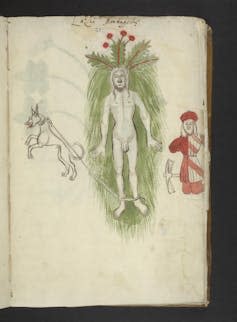In 1897 Mr. Burgess, a Labor Clerk at Oxford University, donated two dried potatoes to the Pitt Rivers Museum. He usually kept them in his pocket. They were the ultimate “jacket” potatoes.
The Pitt Rivers Museum in Oxford is dedicated to categorizing and displaying a “democracy of objects” not by time or nation but by human use. Since potatoes are so common in human culture, there are a lot of potatoes in the museum collection.
In addition to Burgess’s donation, 11 other crumpled specimens have been cataloged and properly labeled in the museum’s collections. Because many of the potatoes are stolen before they are donated, the names of the previous owners often cannot be determined.
So why would anyone want to steal a wrinkled potato? The answer is that these weren’t just stolen potatoes. These were medicinal amulets thought to cure rheumatism and were thought to be even more effective if stolen.
In Victorian times and centuries ago, various vegetables were carried whole or ground into powder, placed in bags and hung around the neck in the hope of preventing or curing disease.
Plants as medicine
Before modern drugs, most material medica (substances or drugs used in medical practice) were herbal. Their use is described in the books of the ancient Greek physician Pedanius Dioscorides (40-70 AD) and in Pliny’s Natural History (1st century AD), an encyclopedia written in ancient Rome. These books from the ancient world continued to be a reference source throughout the Renaissance.

In his book, Pliny described the usefulness of plants such as mandrake root, which was thought to resemble a human figure known as “male organs”. The root was made into amulets to increase fertility and for use in love spells. It is also used in this way in the Song of Solomon in the Bible.
Because the root contains hallucinogenic and narcotic active substances, it was also used as an anesthetic and to relieve arthritis pain. By the 16th century, herbalist John Gerard in his Herball or General Historie of Plants described the legend that if someone pulled it from the ground, the root would scream and kill anyone who heard it (probably the result of several bad journeys).
Diseases caused by planets
Paracelsus, a 16th-century Swiss physician, elaborated on such theories, claiming that each plant has something called a “signature” or sign of its medicinal practice, resembling the body part or ailment it can treat.
For example, lentils and rapeseed were thought to cure smallpox because their seeds resembled flower pustules. Suitable herbs, legumes, seeds or vegetables to effect the cure were gathered in bundles and hung around the neck.
Other plants, such as sunflowers, were thought to support the hot and dry properties of the sun and were good for warming you up if you had a cold.
Plant therapy was also linked to the use of astrology in early medicine. The planets were thought to control the fluids or “humors” in the body (black bile, blood, yellow bile, and phlegm); All of these had to be kept in careful balance to promote health. Imbalance was believed to be cured by bleeding or ingestion of a herbal medicine or, in some cases, by wearing the appropriate herbal amulet.
Diseases caused by a particular planet can be cured by a plant of the opposite planet. For example, because the Moon controls the waters of the tides, lunar diseases were thought to produce copious amounts of cold, moist liquid.
Diseases that produce phlegm and cause sneezing, such as colds, or diseases that cause fluid-filled tumors, such as scrofula, were therefore thought to be ruled by the Moon. These lunar diseases could be treated through sun herbs or tinctures, which were as hot and drying as the sun’s rays. Hence the sunflower treatment. Watery lettuce was to be avoided.
What about our potato and its connection with rheumatism?
Green potatoes and the potato eyes (root-like shoots) contain a poison called solanine. Solanine is chemically closely related to another poisonous tropane alkaloid called atropine in deadly nightshade. In fact, potatoes are called nightshade vegetables.
In Victorian times, atropine cream was sometimes applied in combination with morphine to “relieve the pain of rheumatism, sciatica and neuralgia.” Although this has no scientific basis, atropine is used in contemporary medicine to dilate pupils or increase heart rates in medical emergencies.
There were many cases of murder related to high levels of atropine being put into tea or gin and tonic; its bitter taste was masked by the drink.
As for why potatoes need to be eaten to treat rheumatism, we still don’t know exactly, but that certainly adds to their appeal.


Looking for something good? Cut through the noise with a hand-picked selection of the latest releases, live events and exhibitions delivered straight to your inbox on Fridays, every two weeks. Sign up here.
This article is republished from The Conversation under a Creative Commons license. Read the original article.


Anna Marie Roos receives funding from the National Science Foundation, the Andrew Mellon Foundation, the Arts and Humanities Research Council, the British Academy, the Royal Society of London, the Wellcome Trust, the McKnight Foundation, the Writers’ Guild, and the Lincoln Record Society. and Marc Fitch Fund